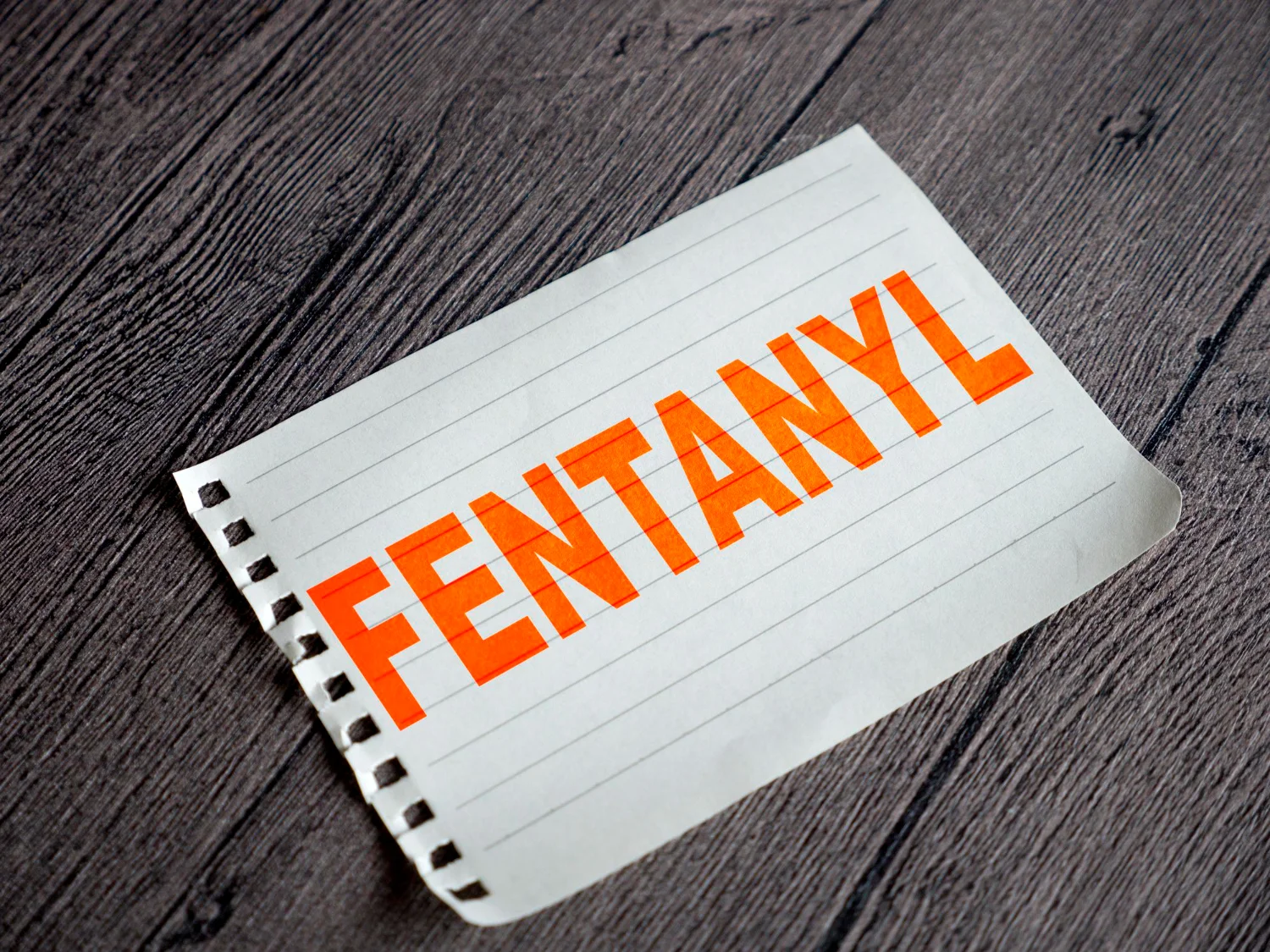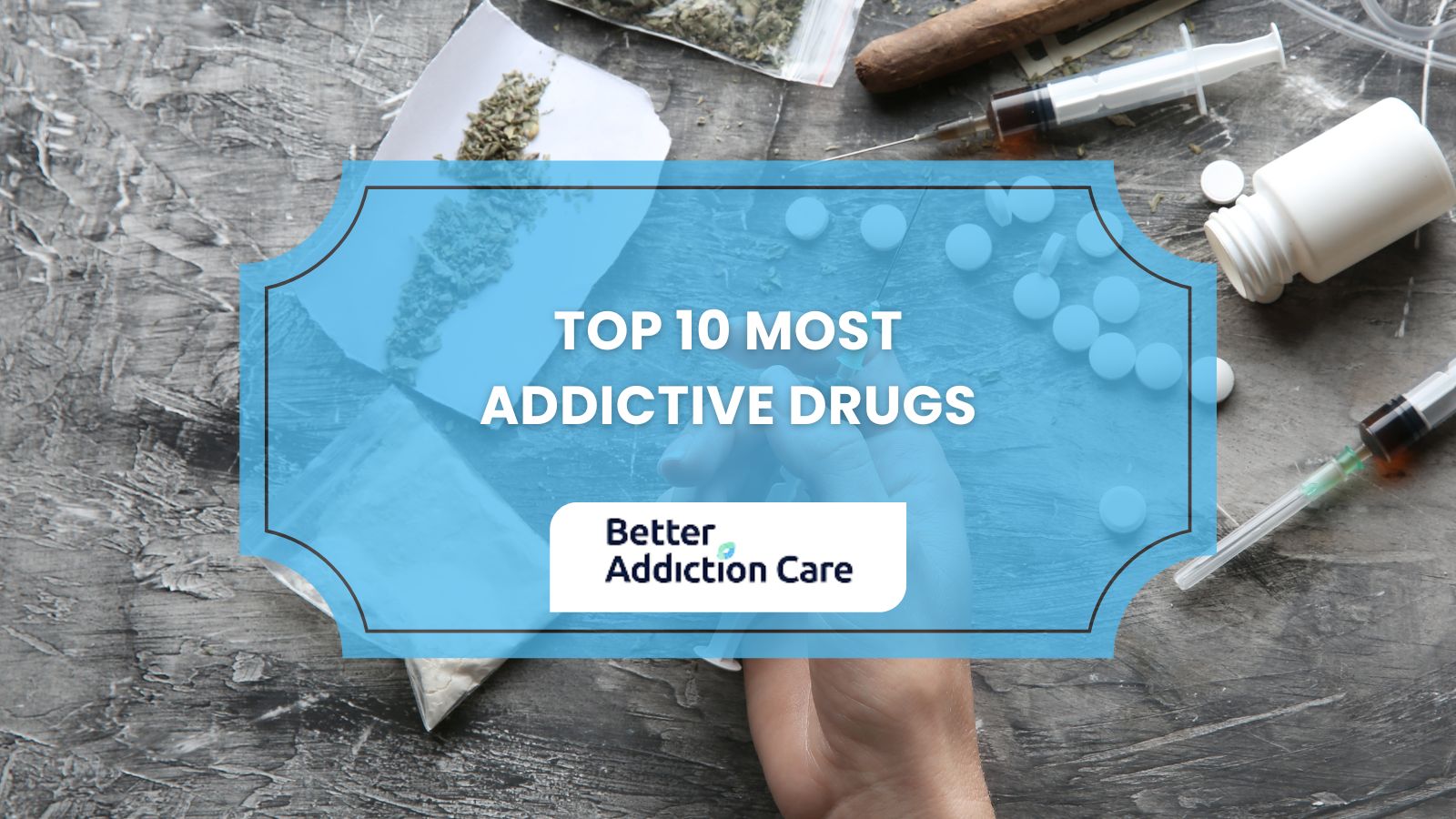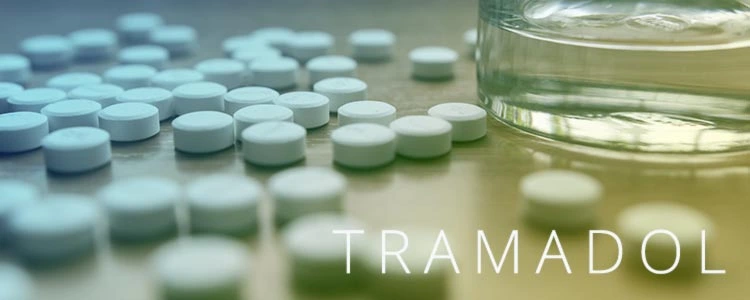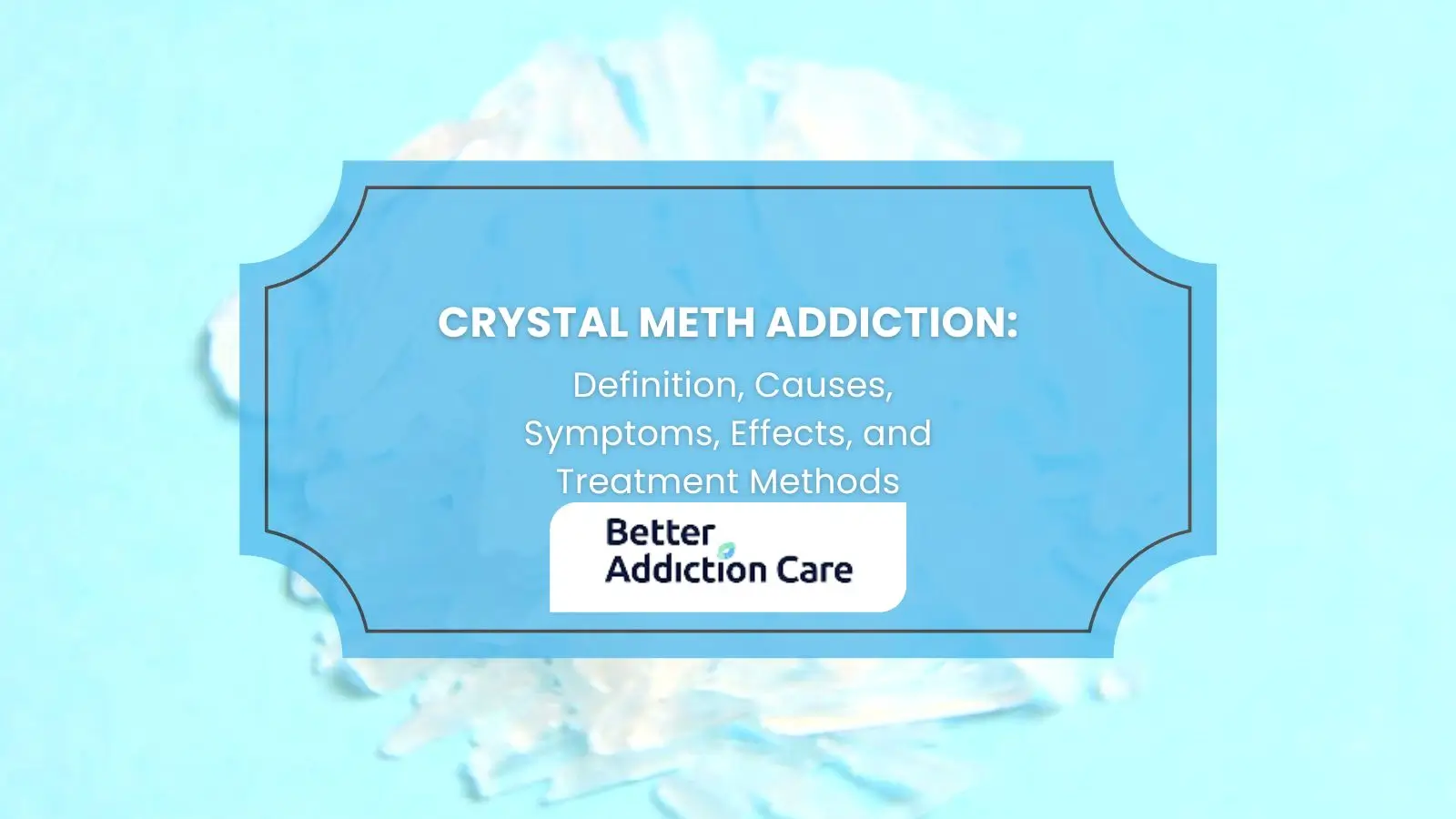Polysubstance Addiction: Definition, Causes, Signs, Effects, And Treatment Methods.
Polysubstance addiction presents a profound and urgent challenge that deeply affects your life and those around you, rooted in the simultaneous or sequential use of multiple substances that intensifies the complexity of the disorder. According to Rockhill, K. M.’s 2025 study, "Polysubstance Use Profiles Among the General Adult Population, United States, 2022," the national prevalence of polysubstance use was found to be 20.9% among the general adult population in the United States.
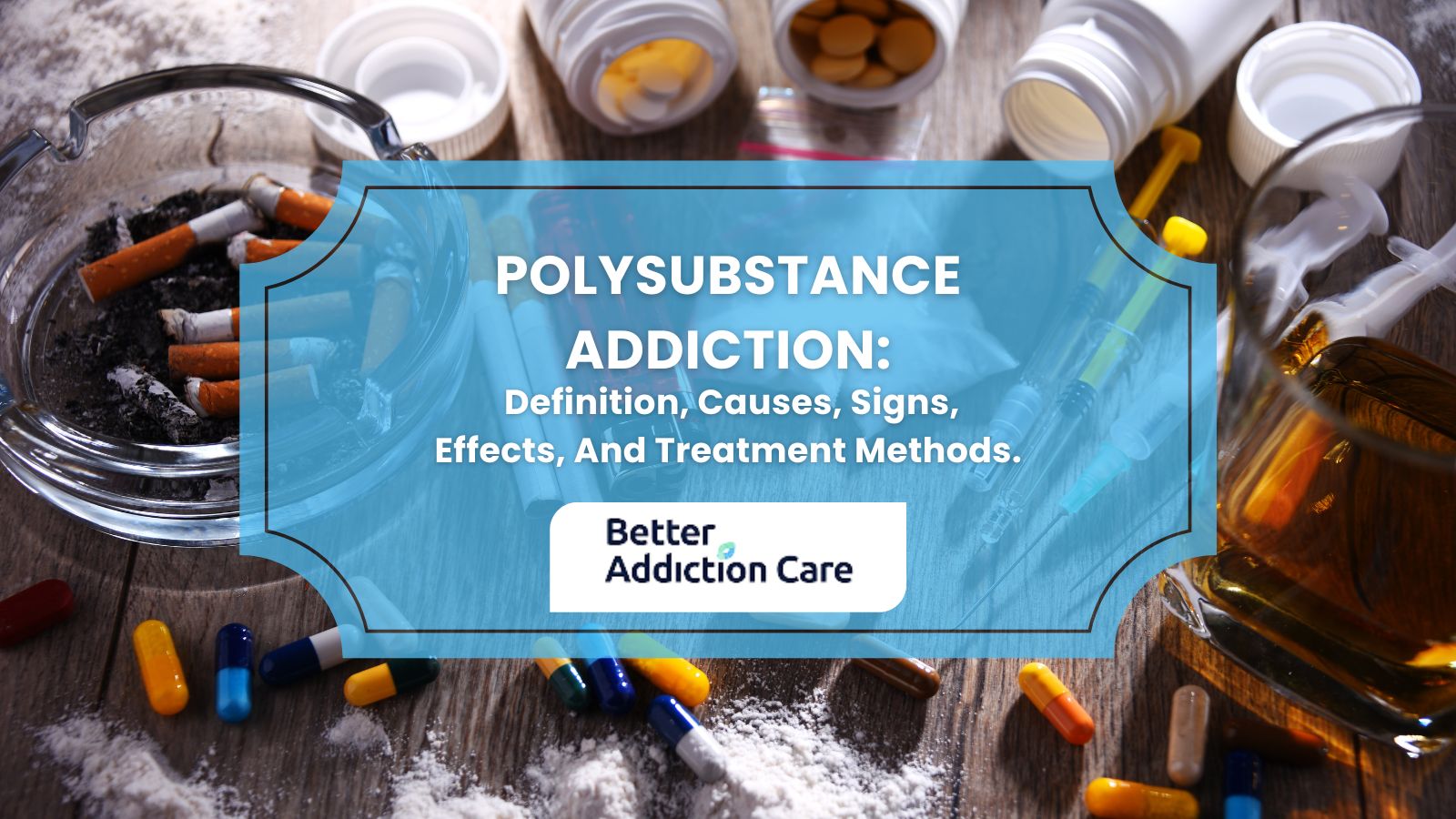
Causes of polysubstance addiction include self-medication, peer pressure, environmental factors, psychological issues, genetic predisposition, and mental health disorders.
Signs of polysubstance abuse involve changes in behavior, neglect of responsibilities, irritability, secretive actions, visible intoxication, stealing for drugs, and social withdrawal.
Effects of polysubstance abuse include breathing problems, increased body temperature, nausea, chest pain, seizures, confusion, mood swings, overdose, and internal bleeding.
Treatment methods for polysubstance addiction include detoxification, cognitive behavioral therapy, medication, long-term rehabilitation programs, support groups, and aftercare.
What is Polysubstance Addiction?
Polysubstance addiction refers to the continuous use of multiple drugs at the same time. Numerous drugs are consumed simultaneously to control the dosage of a particular drug. Polysubstance addiction is either intentional or unintentional, as per the CDC. Intentional misuse of substances happens when multiple drugs are taken together to regulate or enhance the effect of a drug. However, unintentional polysubstance abuse occurs as a result of taking drugs mixed with other substances with no prior knowledge of them.
How Common is Polysubstance Addiction?
Polysubstance abuse is very common because the study titled “National Epidemiologic Survey on Alcohol and Related Conditions (2001-2002)” revealed that almost 5.6% of adults in the US took both alcohol and drugs in that year. Nicotine and alcohol intake are most common during combined use with drugs and stimulants.
What Are The Causes Of Polysubstance Addiction?
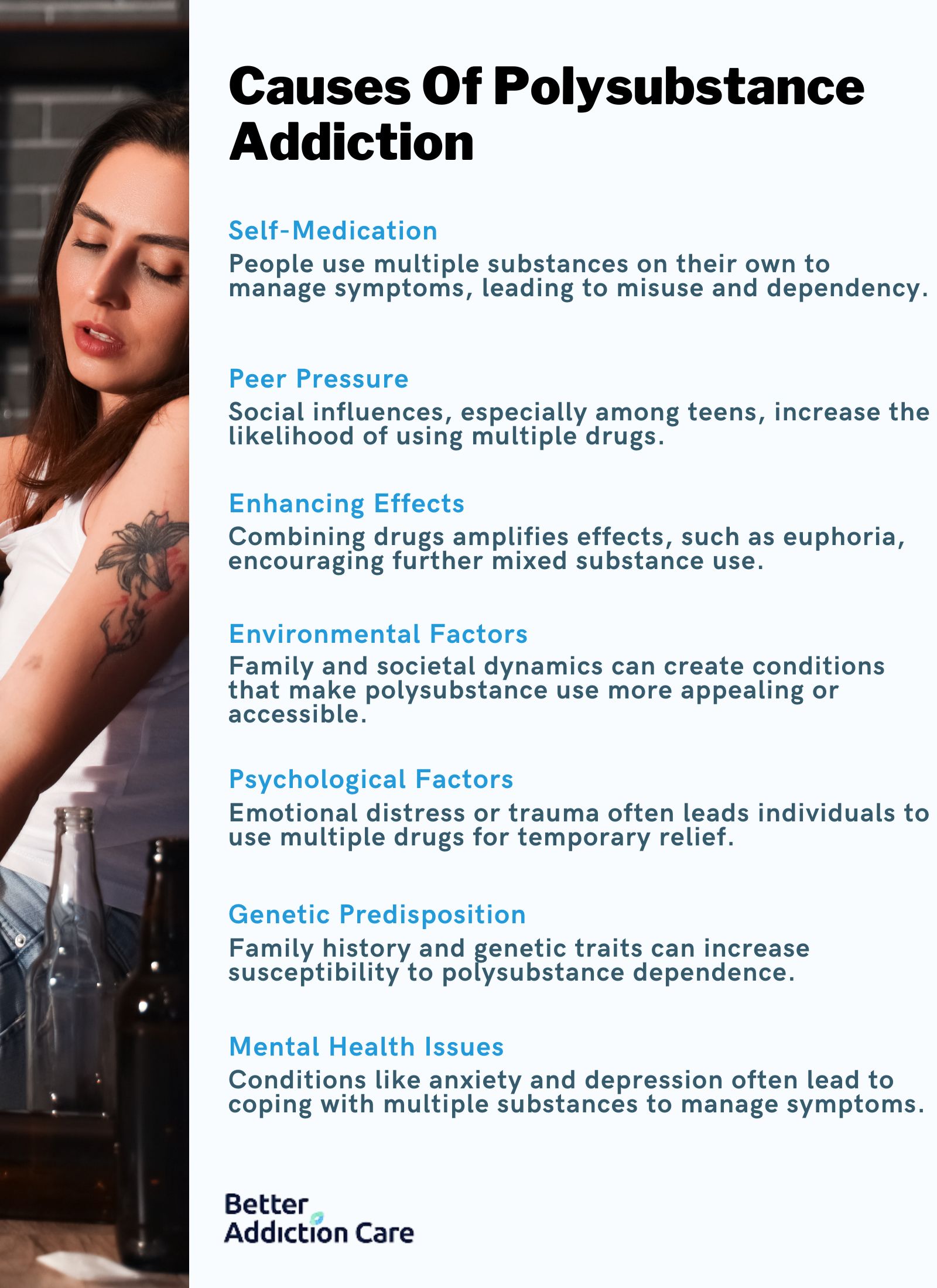
The causes of polysubstance addiction include self-medication, peer pressure, enhancing effects, environmental factors, psychological factors, genetic predisposition, and mental health issues.
The causes of polysubstance addiction are listed below:
-
Self-medication: Self-medication involves individuals treating conditions themselves, leading to mixing medications and substance misuse. Unsupervised intake results in severe consequences.
-
Peer Pressure: Peer pressure influences behavior and activities based on social interactions. Adolescents' engagement in substance abuse is highly connected to peer pressure, leading to polysubstance addiction.
-
Enhancing effects: Enhancing effects increase drug toxicity, leading to a prolonged euphoric state. The use of cocaine with alcohol intensifies and prolongs this state, causing polysubstance addiction.
-
Environmental factors encompass family dynamics, social behaviors, and media exposure. Societal behaviors are linked to the onset of drug addiction, contributing to polysubstance addiction.
-
Psychological factors: Psychological factors include stress, trauma, or illness. Individuals suffering from stress, PTSD, anxiety, and depression turn to substance abuse for relief, leading to polysubstance abuse.
-
Genetic factors: Genetic makeup influences drug abuse susceptibility. Those with a family history of drug abuse are more likely to be addicted. Genetic factors affect managing drug dosage through multiple substance misuse.
-
Mental health issues: Mental health issues like depression, anxiety, and bipolar disorder disrupt daily life. Individuals with these disorders cope with multiple drugs, leading to polysubstance abuse.
What Are The Signs And Symptoms Of Polysubstance Abuse?
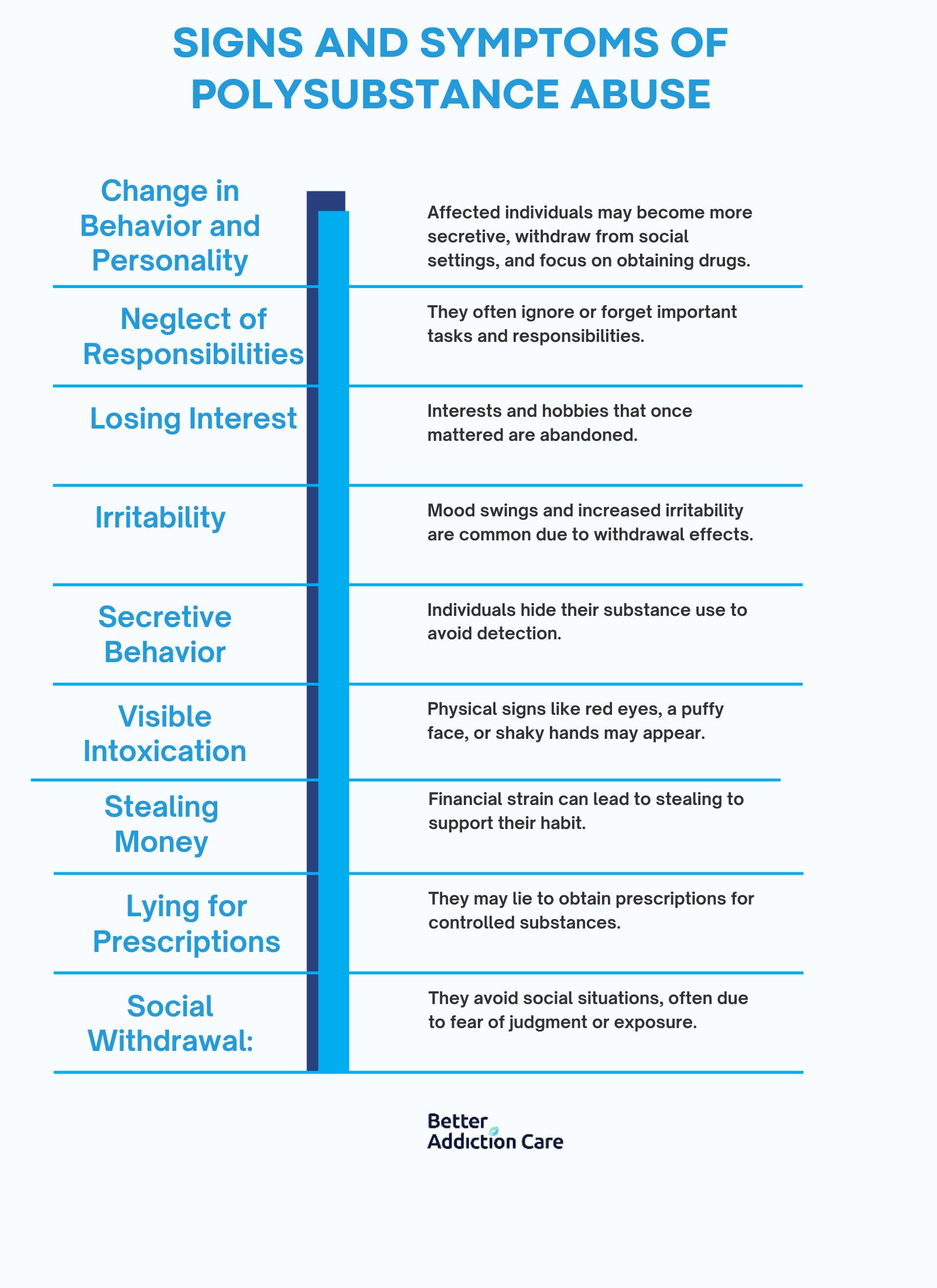
The signs and symptoms of polysubstance abuse include a change in behavior or personality, neglect of responsibilities, loss of interest, irritability, secretive behavior, visible intoxication, stealing money to buy drugs, lying for prescriptions, and social withdrawal.
The common signs and symptoms of polysubstance abuse are listed below:
-
Change in behavior and personality: Polysubstance abuse leads to significant behavioral changes. You withdraw from social gatherings, become secretive, or seek more money for drugs.
-
Neglect of responsibilities: Individuals with polysubstance addiction neglect their responsibilities, forgetting or ignoring activities they were supposed to handle.
-
Losing interest: Losing interest in previously enjoyed activities is a common sign of substance abuse. Polysubstance addiction causes you to give up various aspects of life.
-
Irritability: Polysubstance addiction leads to mood swings and constant irritability. Withdrawal situations heighten irritable moods, impacting daily activities.
-
Secretive behavior: Polysubstance addiction makes you secretive to avoid others knowing about your substance abuse.
-
Visible intoxication: Polysubstance abuse shows in physical appearance, with red eyes, puffy face, and shaky hands being common indicators.
-
Stealing money to buy drugs: Drug addiction leads to financial instability, causing you to steal money to buy drugs.
-
Lying for prescriptions: People with polysubstance addiction lie to access drugs through prescriptions.
-
Social withdrawal: You tend to stay away from social interactions, preferring personal space due to fear of judgment or being caught.
How Is Polysubstance Misuse Dangerous?
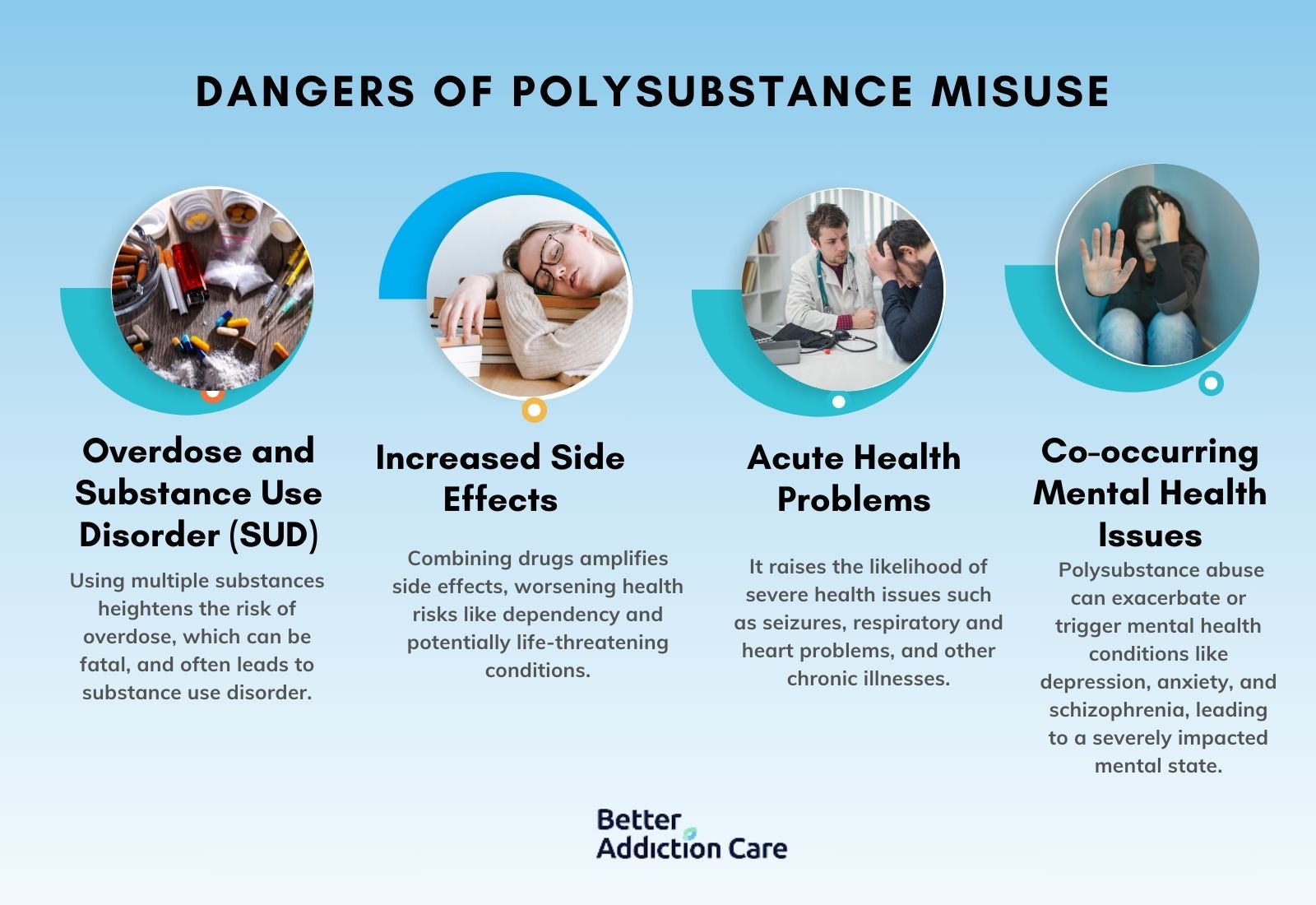
The effects of Polysubstance misuse lead to heightened overdose risks, intensified dependency patterns, severe organ complications, and exacerbated mental health conditions, making recovery more challenging.
Here are some of the common dangerous consequences associated with polysubstance misuse:
-
Overdose and Substance Use Disorder (SUD): Overdose occurs when excessive drug use becomes fatal, while SUD involves compulsive substance intake and is more likely with polysubstance abuse.
-
Increased Severity of Side Effects: Polysubstance use amplifies side effects such as dependency, organ damage, and chronic diseases.
-
Acute Health Problems: Risks of seizures, cardiac arrest, lung diseases, and other serious health issues rise significantly.
-
Co-occurring Mental Health Issues: Depression, anxiety, ADHD, schizophrenia, and personality disorders worsen due to the destabilizing effects of substance misuse on mental health.
What Are The Common Drug Combinations And Their Effects?

The common drug combinations include mixing stimulants, mixing depressants, mixing stimulants and depressants, and mixing alcohol with other drugs.
These are the common drug combinations and the impact they have:
-
Mixing Stimulants: Mixing stimulants like cocaine, meth, and nicotine lowers breathing rates and worsens respiratory issues. Combining these substances raises body temperature to dangerous levels, increasing health risks. Stimulants also impair the digestive tract, leading to nausea and discomfort. Blood pressure spikes, raising the likelihood of chest pain and stroke.
-
Mixing Depressants: Mixing depressants such as alcohol, opioids, and benzodiazepines slows heart activity, increasing overdose risks. Breathing rates drop significantly, potentially causing cardiac arrest. Brain activity slows, resulting in confusion and disrupted chemistry. Higher doses lead to fatal outcomes.
-
Mixing Stimulants and Depressants: Combining stimulants and depressants like cocaine and alcohol causes heightened sensory perception but triggers mood swings. Mixing heroin, fentanyl, or Xanax with depressants increases the risk of a fatal overdose.
-
Mixing Alcohol With Other Drugs: Mixing alcohol with drugs like cocaine or opioids leads to heart problems, liver damage, and organ failure. Blood pressure rises, increasing hypertension. Brain chemistry is altered, causing injuries. Internal bleeding and gastrointestinal inflammation are common dangers.
What Are The Withdrawal Symptoms Of Polysubstance Addiction?
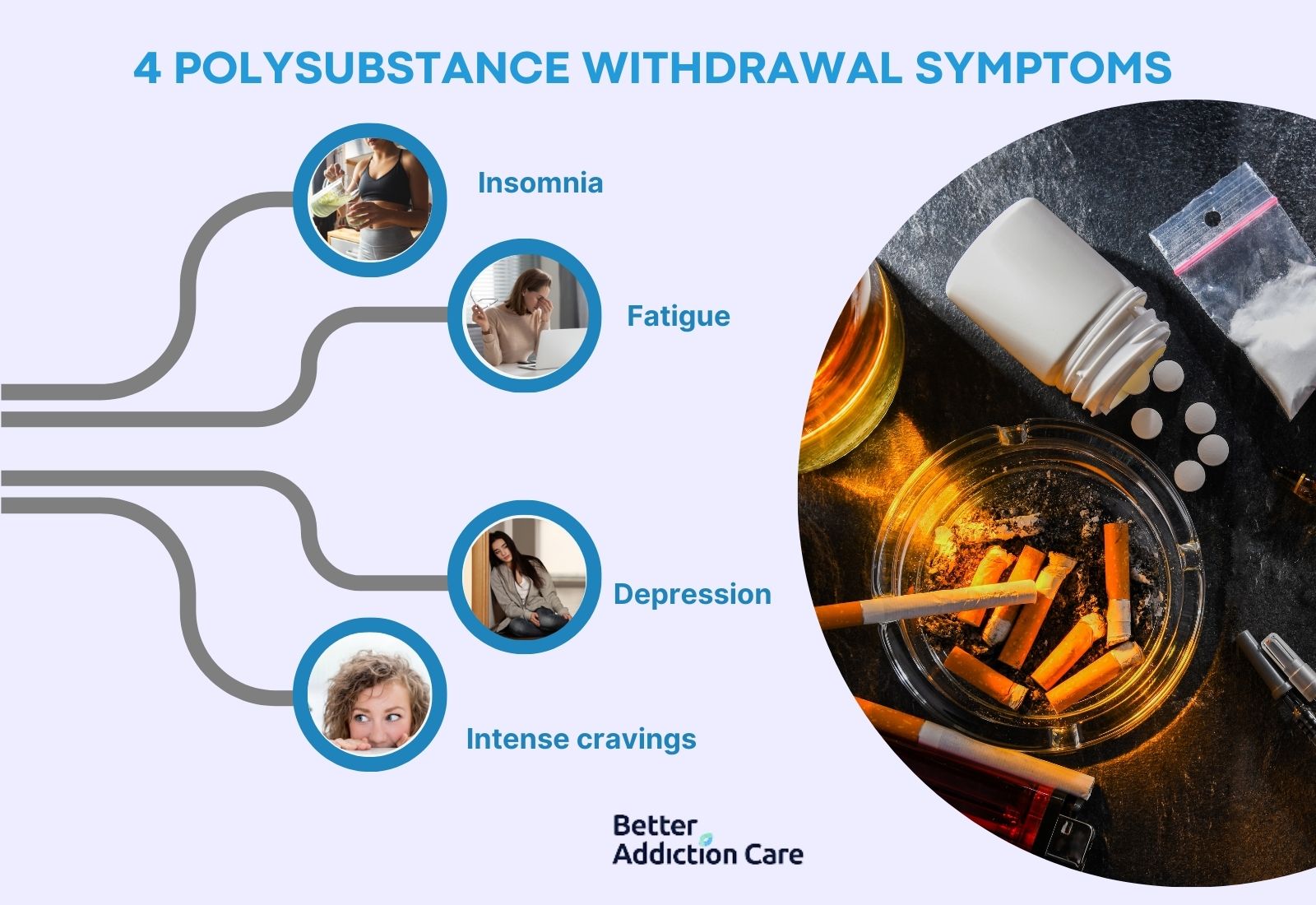
The withdrawal symptoms of polysubstance addiction include insomnia, fatigue, depression, and intense cravings. Insomnia involves disturbed sleep patterns, which include a consistent sleep schedule and reduced screentime. Fatigue occurs as the body adjusts, with diet and exercise restoring energy. Depression arises when numbing effects cease, requiring mental health support. Intense cravings result from the body seeking alternatives, mitigated by healthy lifestyle choices. These symptoms highlight withdrawal challenges and the importance of structured recovery strategies.
What Are The Treatment Methods For Polysubstance Addiction?
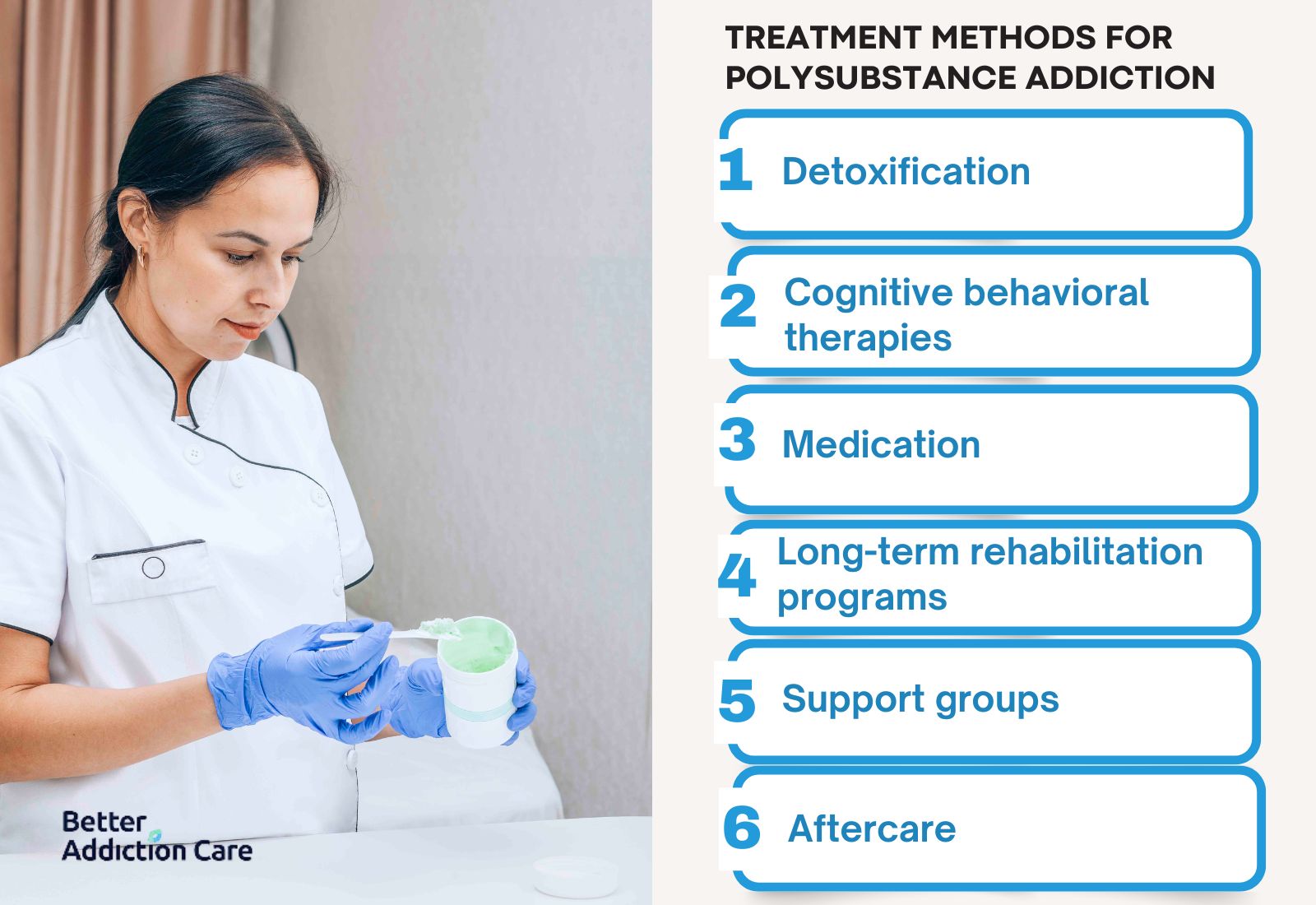
The treatment methods for polysubstance addiction include detoxification, cognitive behavioral therapies, medication, long-term rehabilitation programs (inpatient/outpatient), support groups, and aftercare.
The treatment methods for polysubstance addiction are listed below.
Detoxification
Detoxification refers to the medicated interventions that help the body get rid of drug intoxicants. Detox helps to address the withdrawal symptoms and health issues related to polysubstance addiction. The duration of this treatment form varies depending on the extent of addiction. Detox is completed within a week, but it takes up to a few weeks based on increased severity.
Cognitive behavioral therapies
Cognitive behavioral therapy is a form of therapeutic intervention where a therapist helps relieve the symptoms. Mental health experts hold sessions with the patients and address the root causes of addiction. The CBT sessions last up to several weeks or months, based on the severity of the condition.
Medication
Medications like naltrexone and methadone help get rid of polysubstance abuse. The selection, dosage, and duration of medication are strictly regulated by a medical expert. Drug replacement medications, like nicotine replacements, are prescribed with other medications to curb the situation. Medications take up to 2 to 3 weeks before effects start appearing.
Long-term rehabilitation programs (inpatient/outpatient)
Rehabilitation programs are designed to distract individuals from substance abuse. They are redirected towards other daily life activities and hobbies with medications and special care. Rehabilitation in a specific facility or personalized for the patient at their home. Rehabilitation takes 2 to 3 months before recovery happens.
Support groups
Support groups involve people suffering from similar conditions talking about it under an expert’s supervision. People with polysubstance addiction benefit from support groups as they find hope in recovering after talking about it. The effectiveness of these sessions varies based on the person’s condition.
Aftercare
Aftercare is an essential part of polysubstance addiction treatment. Patients are at a great risk of falling back into the same pit even after full recovery. Aftercare, like a few therapy sessions and medical check-ups, helps to keep the recovery in check.
What Are The Most Common Polysubstance Abuse Drugs?
The common polysubstance abuse drugs are alcohol, marijuana, opioids, methamphetamine, etc. Polysubstance abuse happens either by mixing the same type of drugs, like depressants, or by taking different types of drugs together, like stimulants and depressants. The consequences of polysubstance abuse are based on the type of drug combinations used.
Are Alcohol And Marijuana Frequently Combined in Polysubstance Use?
Yes, alcohol and marijuana are frequently combined in polysubstance use. Alcohol is present in drinks in the form of ethanol. However, marijuana is the dried leaves of a cannabis plant. Both of these drug forms have sedative and addictive risk factors. Alcohol addiction is associated with drinking, while marijuana is associated with the inhalation of smoke.
Do Users Of Heroin-Benzodiazepine Mixes Show Similar Dependency Patterns?
Yes, users of heroin-benzodiazepine mixes show similar dependency patterns. Benzodiazepine is a form of a medicinal drug that slows down brain activity. Heroine, on the other hand, is a drug made from the opium poppy plant that gives euphoric effects. Both of these drugs are known for sedation and lowered breathing rates. The mix of heroin and benzodiazepine increases the risk of overdose.
Is Opioid Abuse More Common Than Methamphetamine In Polysubstance Use?
Yes, opioid abuse is more common than methamphetamine in polysubstance use. Opioids include mainly painkillers and narcotics. Opioid affects the opioid receptors in the brain, blocking any form of pain signals coming to the brain. Methamphetamine is a powerful drug that affects the central nervous system. Meth is prescribed during ADHD treatment, but it remains a recreational drug and leads to severe methamphetamine addiction.
How To Find Local Drug Rehab Facilities for Polysubstance Addiction Treatment?
To find rehabilitation options for polysubstance addiction treatment, start by using a reliable locator tool designed to connect you with tailored recovery options. This process helps you identify nearby centers that specialize in treating polysubstance addiction, offering services like detox, inpatient care, outpatient programs, and dual-diagnosis support. Better Addiction Care provides a local drug rehab facility resource that simplifies your search. Consulting healthcare professionals or addiction specialists ensures the facility you choose aligns with your specific needs. This approach guarantees you access to a trusted and supportive environment for effective, long-term recovery.


